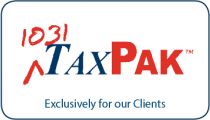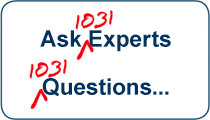You are here
1031 News › Security of Funds One of the Biggest Issues Facing 1031 Exchanges › Security of Funds One of the Biggest Issues Facing 1031 ExchangesSecurity of Funds One of the Biggest Issues Facing 1031 Exchanges
Error message
Deprecated function: The each() function is deprecated. This message will be suppressed on further calls in _taxonomy_menu_trails_menu_breadcrumb_alter() (line 436 of /home/expert1031/public_html/sites/all/modules/taxonomy_menu_trails/taxonomy_menu_trails.inc).Security is the big issue for those investors doing 1031 exchanges. There have been a lot of stories in the news lately about intermediaries who’ve taken their clients’ exchange funds. All of the bad things that happen with exchange accounts stem from commingled accounts, rather than separate exchange accounts. Yet few intermediaries place each exchange client’s money in a separate account for them; commingling is the industry standard.
When “commingling,” all of the exchange funds are placed in a single account rather than in a series of multiple, or “separate,” accounts set up for each client. The primary reason that intermediaries commingle is to maximize their personal return on your money – they earn a large return and pay you a small portion of it. With a separate account you get all the earnings from the account.
As I said, all bad things start from a commingled account. For example, in an effort to maximize their return, the intermediary might make risky investments with a commingled account. With a separate account your money is typically in a money market account for you and you get those earnings. With a commingled account it is much easier to steal the entire account. It would be very difficult, if not impossible, to steal hundreds of individual accounts; doing so would take a lot of time, and it couldn’t be done without the bank noticing.
...all bad things start from a commingled account...
With separate accounts you could require dual signatures—yours, and the intermediary’s—for each withdrawal. This isn’t possible with a commingled account, although the intermediary could set up “sub-accounts” of the commingled account and use a dual signature feature for “your” sub-account.
Sub-accounts are simply an accounting of the master account, and don’t protect you because the risk is at the master account level, which the intermediary controls, and the intermediary could draw the master account down below the balance of the sub-accounts. For example, the sub-accounts might all add up to $10 million on paper, but the intermediary might have drawn the master account down to $500. A dual signature arrangement on a sub-account is an arrangement just between you and the intermediary since the bank is only bound by the signature agreement for the master account.
So, how do you know if you have a truly separate account or just a sub-account? The easiest way is to verify whose tax identification number (or social security number) is on the account. If it’s yours, it’s a separate account; if it’s the intermediary’s then it’s a sub-account.
How do you protect yourself? The most important thing is to make sure that your exchange money is in a truly separate account. Then make sure that your account requires dual signatures to withdraw money. There should be a form that sets out the signatures required to access the account. You should have a copy of this form in your files, and the form should be signed by an officer of the bank proving that the bank is aware of the dual signature arrangement and agrees to be bound by it.
Or you could have your bank handle your exchange – the problem is that very few banks will act as a qualified intermediary.





Add new comment